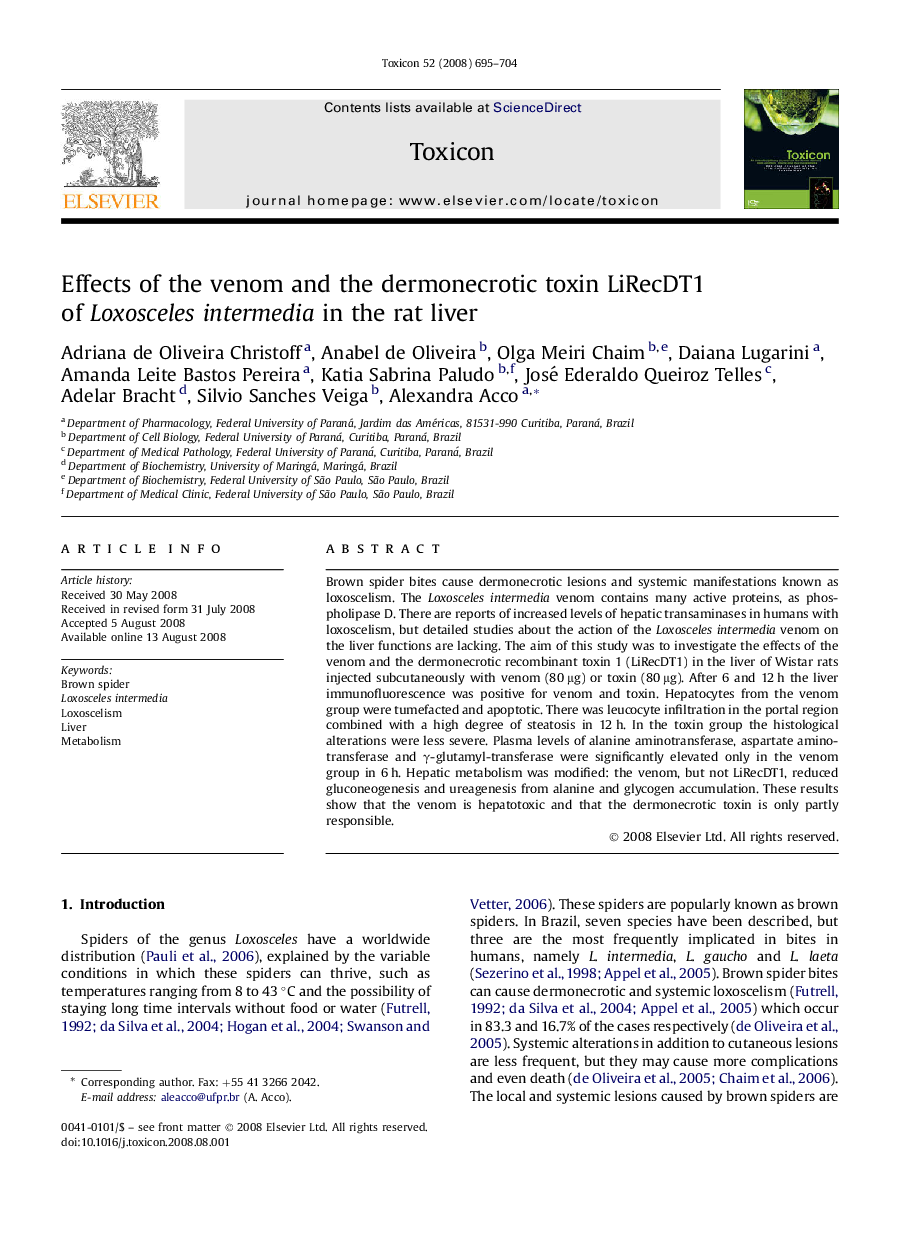| Article ID | Journal | Published Year | Pages | File Type |
|---|---|---|---|---|
| 2066520 | Toxicon | 2008 | 10 Pages |
Abstract
Brown spider bites cause dermonecrotic lesions and systemic manifestations known as loxoscelism. The Loxosceles intermedia venom contains many active proteins, as phospholipase D. There are reports of increased levels of hepatic transaminases in humans with loxoscelism, but detailed studies about the action of the Loxosceles intermedia venom on the liver functions are lacking. The aim of this study was to investigate the effects of the venom and the dermonecrotic recombinant toxin 1 (LiRecDT1) in the liver of Wistar rats injected subcutaneously with venom (80 μg) or toxin (80 μg). After 6 and 12 h the liver immunofluorescence was positive for venom and toxin. Hepatocytes from the venom group were tumefacted and apoptotic. There was leucocyte infiltration in the portal region combined with a high degree of steatosis in 12 h. In the toxin group the histological alterations were less severe. Plasma levels of alanine aminotransferase, aspartate aminotransferase and γ-glutamyl-transferase were significantly elevated only in the venom group in 6 h. Hepatic metabolism was modified: the venom, but not LiRecDT1, reduced gluconeogenesis and ureagenesis from alanine and glycogen accumulation. These results show that the venom is hepatotoxic and that the dermonecrotic toxin is only partly responsible.
Related Topics
Life Sciences
Biochemistry, Genetics and Molecular Biology
Biochemistry, Genetics and Molecular Biology (General)
Authors
Adriana de Oliveira Christoff, Anabel de Oliveira, Olga Meiri Chaim, Daiana Lugarini, Amanda Leite Bastos Pereira, Katia Sabrina Paludo, José Ederaldo Queiroz Telles, Adelar Bracht, Silvio Sanches Veiga, Alexandra Acco,
